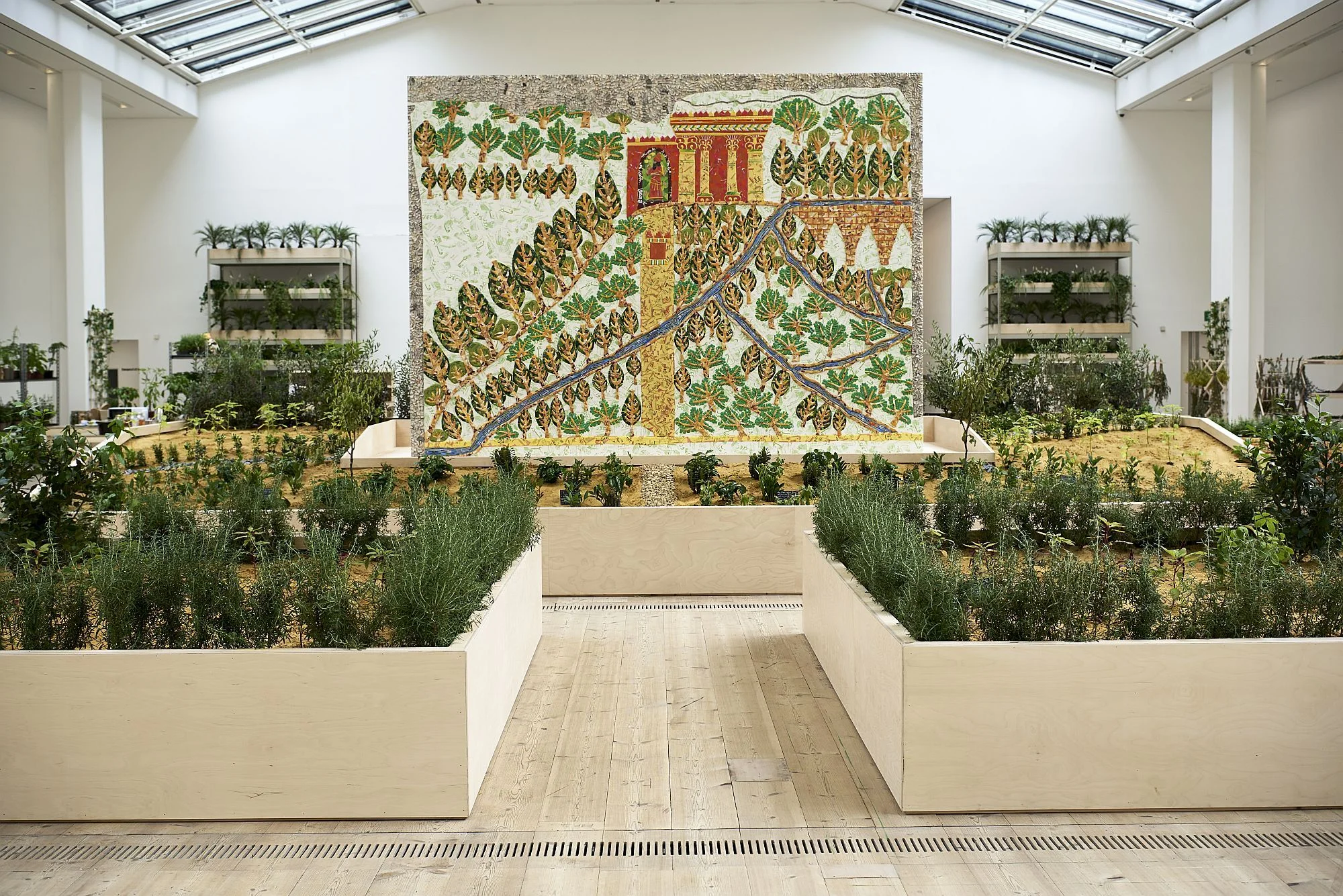Intensifying the everyday—by making a scent garden for migrants in Gateshead, and by weirding a toy shop in Ayr High Street
Michael Rakowitz: The Waiting Gardens of the North, Baltic, Newcastle
This week, we note two artists using their skills to transfigure the everyday - firstly through a deep comfort, secondly through estrangement. See our archive—artists are key to cosmolocally empowering communities.
Firstly: how to make a space that is hospitable and healing for migrants and asylum-seekers in a city? The Iraqi-American artist Michael Rakowitz was asked by the Baltic museum to respond. As Prospect magazine reports:
The original brief, Rakowitz tells me, was straightforward enough: he was to create some kind of public garden. “I was very interested in the invitation,” he says, “but I’m not really a gardener.” But when the curators told him they wanted to involve the local refugee community—the northeast of England is a major resettlement area for those seeking asylum—the idea gained a more personal focus.
Rakowitz was struck by the way that refugees in this country, most of whom are housed in hotels, have little control over their food. “Being cut off from being able to do things like host, to always be considered a guest, creates these really difficult power dynamics that one has to reside within,” he tells me. “You’re always a kind of subaltern.”
As the child of migrants himself—his mother was from Baghdad, his father an eastern European Jew from Brooklyn—Rakowitz knows intimately the importance of cooking, hospitality and “sites of gathering” for diasporic communities.
“It is a form of magic that, in a saucepan, you put in the oil and the onions and some tomatoes and then you put in the Baharat spice mix, like the one that my grandmother used when she was in Baghdad… all of those things activate another place. That does things to your body that your brain can’t quite process immediately.”
It was to this intangible yet central “olfactory experience” that Rakowitz dedicated his garden—to the particular herbs and spices that constitute so much of our sense of home.
A month after our chat, I visit the garden at the Baltic. In the skylit top floor space—“an instant greeting house”, as Rakowitz puts it—you find a small labyrinth of raised beds holding all sorts of plants: basil, coffea arabica, catnip, African milk tree, Damask rose.
Some space has been set aside for preparing tea, spices and for drying herbs. By autumn the garden will be harvested to make way for new plants. Throughout the room is an earthy, calming smell.
At the centre of the garden is a reconstruction of a relief panel from the 7th century BC North Palace of Nineveh—currently in the British Museum—depicting the garden of the Assyrian king Ashurbanipal.
From this panel, remade in papier-mâché and a collage of bright food packaging labels—“It’s almost like colour returning to the face of somebody who’s been ill,” Rakowitz told me—a lone man looks out on an orchard irrigated by a viaduct. The trails of plants in the beds align with those in the panel, in a kind of continuum.
Some scholars consider Ashurbanipal’s garden to be the real basis for the Hanging Gardens of Babylon. According to legend, those gardens were created by King Nebuchadnezzar to comfort his homesick queen, Amytis, who missed the verdant mountains of her native Media. Similarly, many of the plants in the Baltic’s garden have been chosen by refugees for how much they remind them of home.
“One thing that I love about the Hanging Gardens,” Rakowitz told me, “is that ever since I was a kid, all they could ever be were fantastical drawings… The imagination is a really generous space. It means we can all come into the room with our own ideas of what the gardens should look like.”
Many of those who seek refuge in the UK may never see their homeland again. At least here, in spaces like this, they might find—for an afternoon or two—a place where it can be reimagined.
Secondly, Scottish artist Rachel Maclean has transformed a vacant shop in Ayr high street, and turned it into an experience that subverts Barbie-like consumerism. See the embed from the Scotsman above, and as the BBC reports:
Mimi is the colourful character created by Maclean for the Edinburgh sculpture park Jupiter Artland in 2021. The ambitious work was her first combining architecture and animation. She always envisaged a spin-off work, which would tour Scottish High Streets and take over empty shops.
Now, the reality is Don't Buy Mi - a surreal toy shop where nothing is for sale and all the items come from Maclean's dark imagination - decaying dolls with a demonic feel, upside-down boxes, signs and a dark animated film.
Mimi has already been to Perth but arrives this week in Ayr where her topsy-turvy shop draws attention to the crisis facing many High Streets across the country.
Her creator has exhibited globally, but she says there's something special about taking work to people's doorsteps. No matter what the response.
"A lot of the intention of the work is that you don't necessarily know it's art when you see it," said Maclean. "Initially you could just think it's a disused shop.
"There is something really ordinary about a shop, a High Street shop. I think there's a degree of accessibility to a High Street, you can just walk in, and you are inviting an honest response.
"I am looking forward to seeing what the people of Ayr think about it."

